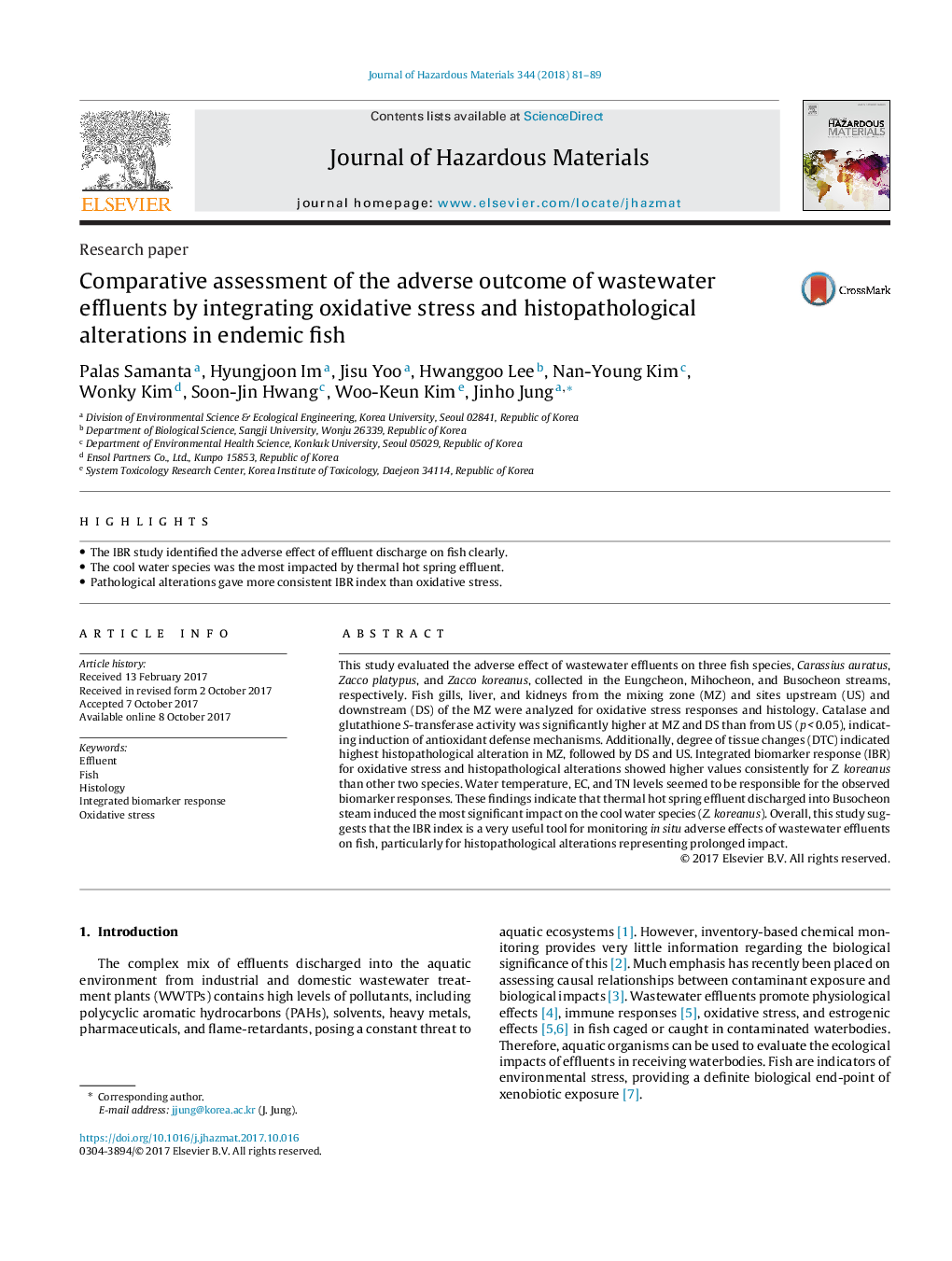| Article ID | Journal | Published Year | Pages | File Type |
|---|---|---|---|---|
| 4979033 | Journal of Hazardous Materials | 2018 | 9 Pages |
Abstract
This study evaluated the adverse effect of wastewater effluents on three fish species, Carassius auratus, Zacco platypus, and Zacco koreanus, collected in the Eungcheon, Mihocheon, and Busocheon streams, respectively. Fish gills, liver, and kidneys from the mixing zone (MZ) and sites upstream (US) and downstream (DS) of the MZ were analyzed for oxidative stress responses and histology. Catalase and glutathione S-transferase activity was significantly higher at MZ and DS than from US (p < 0.05), indicating induction of antioxidant defense mechanisms. Additionally, degree of tissue changes (DTC) indicated highest histopathological alteration in MZ, followed by DS and US. Integrated biomarker response (IBR) for oxidative stress and histopathological alterations showed higher values consistently for Z. koreanus than other two species. Water temperature, EC, and TN levels seemed to be responsible for the observed biomarker responses. These findings indicate that thermal hot spring effluent discharged into Busocheon steam induced the most significant impact on the cool water species (Z. koreanus). Overall, this study suggests that the IBR index is a very useful tool for monitoring in situ adverse effects of wastewater effluents on fish, particularly for histopathological alterations representing prolonged impact.
Related Topics
Physical Sciences and Engineering
Chemical Engineering
Chemical Health and Safety
Authors
Palas Samanta, Hyungjoon Im, Jisu Yoo, Hwanggoo Lee, Nan-Young Kim, Wonky Kim, Soon-Jin Hwang, Woo-Keun Kim, Jinho Jung,
